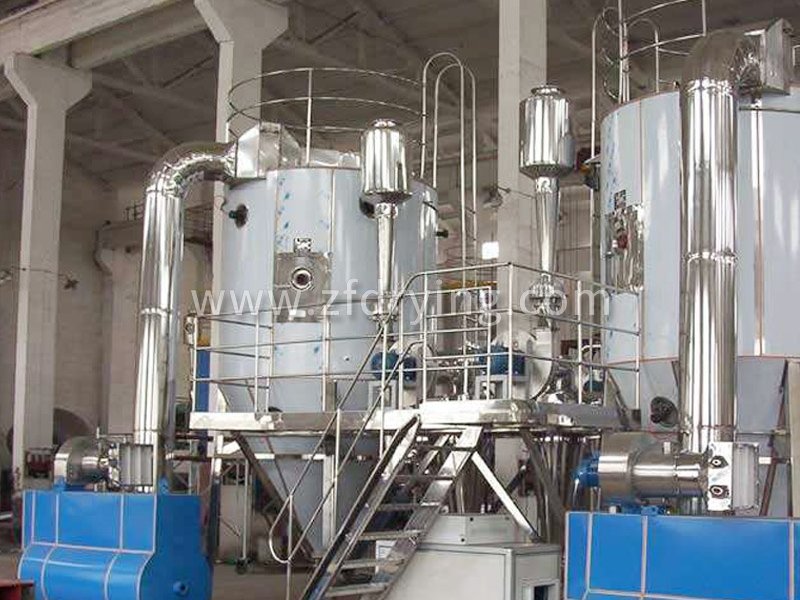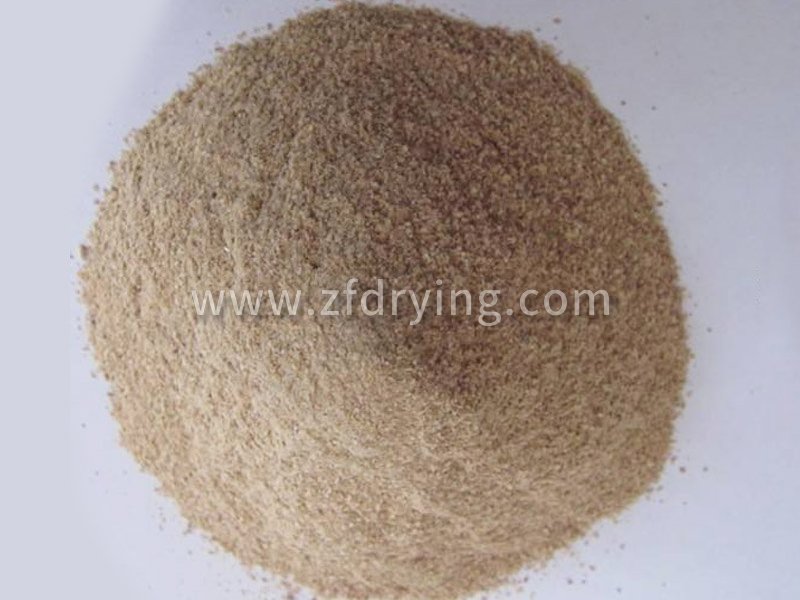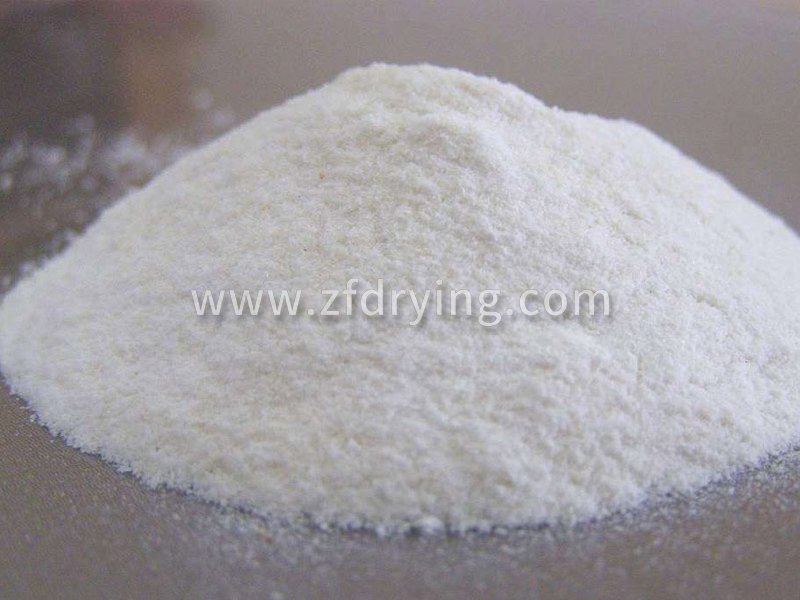Definition of Food Additives
Food additives are non nutritional substances that are intentionally added in small amounts to improve the appearance, flavor, organizational structure, or storage properties of food. According to this definition, food fortifiers aimed at enhancing the nutritional content of food should not be included in the scope of food additives.
Introduction of food additive spray dryer
Spray drying is a process often used in liquid forming and drying industries. It is suitable for generating powder and granular solid products from solution, lotion, suspension and paste liquid raw materials. Therefore, when the particle size distribution, residual moisture content, bulk density and particle shape of the finished product meet the standards, spray drying is an ideal process.
Working principle of food additive spray dryer
The air is filtered and heated, entering the top air distributor of the dryer, and the hot air enters the drying chamber in a spiral and uniform manner. The feed liquid passes through the high-speed centrifugal atomizer on the top of the tower body, and (rotating) spray into extremely fine mist like liquid beads, which can be dried into finished products in a very short time in parallel with hot air. The finished product is continuously output from the bottom of the drying tower and the cyclone separator, and the exhaust gas is discharged by the fan.
Performance characteristics of food additive spray dryer
The drying speed is fast, and the surface area of the material liquid greatly increases after atomization. In the hot air flow, 95% -98% of the water can be instantly evaporated, and the drying time is only a few seconds. It is particularly suitable for drying heat-sensitive materials.
The product has good uniformity, fluidity, and solubility, high purity, and good quality.
The production process is simplified and the operation and control are convenient. For liquids with a moisture content of 40-60% (up to 90% for special materials), they can be dried into powder products in one go, without the need for crushing and screening after drying, reducing production processes and improving product purity. The particle size, bulk density, and moisture of the product can be adjusted within a certain range by changing the operating conditions, making it easy to control and manage.
Examples of common food additive materials that can be dried
Preservatives - commonly used include sodium benzoate, potassium sorbate, sulfur dioxide, lactic acid, etc. Used in food processing such as jam and preserves.
Antioxidants - Similar to preservatives, they can extend the shelf life of food. Commonly used are dimensional C, heterodimensional C, etc.
Colorants - commonly used synthetic pigments include carmine, amaranth, lemon yellow, indigo, etc. It can change the appearance of food and enhance its appetite.
Thickener and stabilizer - can improve or stabilize the physical properties of cold drinks, making the appearance of the food smooth and delicate. They keep frozen foods such as ice cream in a soft and loose tissue structure for a long time.
Dilatant - Adding a leavening agent to some candies and chocolates can promote the production of carbon dioxide in the sugar body, thereby exerting a leavening effect. Commonly used loosening agents include sodium bicarbonate, ammonium bicarbonate, composite loosening agents, etc.
Sweeteners - commonly used artificially synthesized sweeteners include saccharin sodium, sodium cyclamate, etc. The purpose is to increase the sweetness.
Sour flavoring agents - Some beverages, candies, etc. often use sour flavoring agents to regulate and improve the aroma effect. Commonly used include citric acid, tartaric acid, malic acid, lactic acid, etc.
Whitening agent - Benzoyl peroxide is the main component of flour whitening agent. The maximum allowable dosage for adding Chinese food to flour is 0



